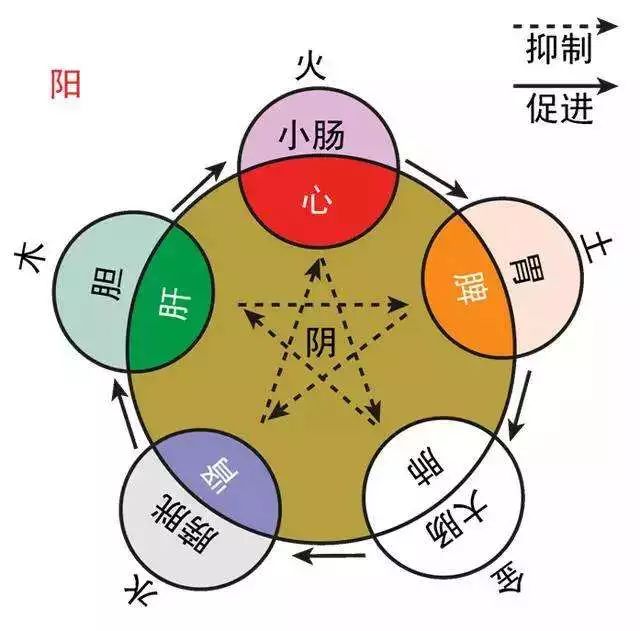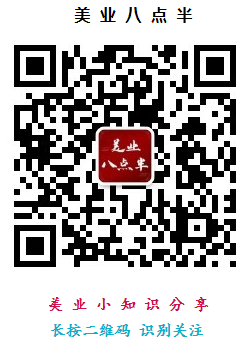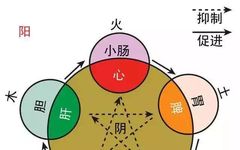Five Zang Organs
1. Heart: The heart is the residence of the spirit, the master of blood, and the root of the pulse. It belongs to the fire element in the Five Elements theory. Physiological functions: ① Governs blood vessels; ② Governs consciousness; The heart opens to the tongue, connects with the pulse in the body, its manifestation is on the face, associated with joy in emotions, and sweat in fluids. The heart is interiorly related to the small intestine.
2. Lung: The lung is the place of the corporeal soul (po) and the master of qi, belonging to the metal element. Physiological functions: ① Governs qi and controls respiration; ② Governs the dispersing and descending of qi; ③ Regulates the water pathways; ④ Governs the hundred vessels and treats stagnation (congestion); Assists the heart in regulating the circulation of qi and blood; The lung connects to the throat, manifests on the skin, its expression is in the hair, opens to the nose, associated with worry in emotions, and mucus in fluids. The lung is interiorly related to the large intestine.
3. Spleen: The spleen is the source of qi and blood transformation, the foundation of postnatal life, and stores intention, belonging to the earth element. Physiological functions: ① Governs transportation and transformation; ② Governs the raising of clear qi; ③ Governs the containment of blood; Opens to the mouth, connects with the flesh, governs the limbs, its manifestation is on the lips, associated with thought in emotions, and saliva in fluids. The spleen is interiorly related to the stomach.
4. Liver: The liver is the place of the ethereal soul (hun), the storehouse of blood, and the root of tendons, belonging to the wood element. Physiological functions: ① Governs the smooth flow of qi; ② Stores blood; Opens to the eyes, connects with the tendons, its manifestation is in the nails, associated with anger in emotions, and tears in fluids. The liver is interiorly related to the gallbladder.
5. Kidney: The kidney is the foundation of pre-natal essence, stores will, and the lower back is the organ of the kidney, belonging to the water element. Physiological functions: ① Stores essence, governs growth, development, and reproduction; ② Governs water; ③ Governs the inhalation of qi; In the body, it relates to the bones, governs the production of marrow, its manifestation is in the hair, opens to the ears and the two yin (anus and perineum), associated with fear in emotions, and saliva in fluids. The kidney is interiorly related to the bladder.
Six Fu Organs
1. Gallbladder: Physiological function: Stores and excretes bile, the gallbladder governs decision-making.
2. Stomach: Physiological function: Receives and ripens food and drink, the stomach descends to harmonize.
3. Small Intestine: Physiological function: Governs the reception and transformation of substances, separates the clear from the turbid, “the small intestine governs fluids.”
4. Large Intestine: Physiological function: Transmits and transforms waste, the large intestine governs fluids.
5. Bladder: Physiological function: Stores and excretes urine, relying on the kidney’s qi transformation function.
6. San Jiao (Triple Burner): Physiological function: Facilitates the movement of original qi, regulates the qi mechanism and transformation, serving as the pathway for the movement of water and fluids.

MORE | 更多知识
Enter keywords in our public account homepage to search for more knowledge: Dermatology, Meridians, Facial Diagnosis, Moxibustion, Gua Sha, Cupping, Mud Moxibustion, Lymphatic, Breast, Cold in the Uterus, Dampness, Gluteal Therapy, Liver and Gallbladder, …
Long press the QR code to recognize and follow



